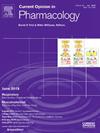Regulation of pathway choice in DNA repair after double-strand breaks
IF 4.2
3区 医学
Q1 PHARMACOLOGY & PHARMACY
引用次数: 0
Abstract
DNA damage signaling is a highly coordinated cellular process which is required for the removal of DNA lesions. Amongst the different types of DNA damage, double-strand breaks (DSBs) are the most harmful type of lesion that attenuates cellular proliferation. DSBs are repaired by two major pathways—homologous recombination (HR), and non-homologous end-joining (NHEJ) and in some cases by microhomology-mediated end-joining (MMEJ). Preference of the pathway depends on multiple parameters including site of the DNA damage, the cell cycle phase and topology of the DNA lesion. Deregulated repair response contributes to genomic instability resulting in a plethora of diseases including cancer. This review discusses the different molecular players of HR, NHEJ, and MMEJ pathways that control the switch among the different DSB repair pathways. We also highlight the various functions of chromatin modifications in modulating repair response and how deregulated DNA damage repair response may promote oncogenic transformation.
双链断裂后DNA修复的途径选择调控。
DNA损伤信号是一个高度协调的细胞过程,是DNA损伤清除所必需的。在不同类型的DNA损伤中,双链断裂(DSBs)是最有害的损害类型,它会减弱细胞增殖。dsb的修复主要有两种途径:同源重组(HR)和非同源末端连接(NHEJ),在某些情况下通过微同源介导的末端连接(MMEJ)进行修复。该途径的选择取决于多个参数,包括DNA损伤的位置、细胞周期阶段和DNA损伤的拓扑结构。不受管制的修复反应导致基因组不稳定,导致包括癌症在内的多种疾病。本文讨论了HR、NHEJ和MMEJ通路中控制DSB修复通路转换的不同分子。我们还强调了染色质修饰在调节修复反应中的各种功能,以及不受调节的DNA损伤修复反应如何促进致癌转化。
本文章由计算机程序翻译,如有差异,请以英文原文为准。
求助全文
约1分钟内获得全文
求助全文
来源期刊
CiteScore
8.80
自引率
2.50%
发文量
131
审稿时长
4-8 weeks
期刊介绍:
Current Opinion in Pharmacology (COPHAR) publishes authoritative, comprehensive, and systematic reviews. COPHAR helps specialists keep up to date with a clear and readable synthesis on current advances in pharmacology and drug discovery. Expert authors annotate the most interesting papers from the expanding volume of information published today, saving valuable time and giving the reader insight on areas of importance.

 求助内容:
求助内容: 应助结果提醒方式:
应助结果提醒方式:


